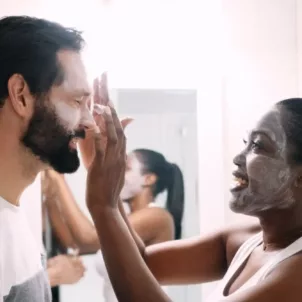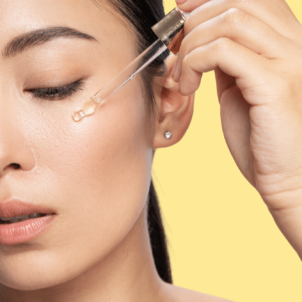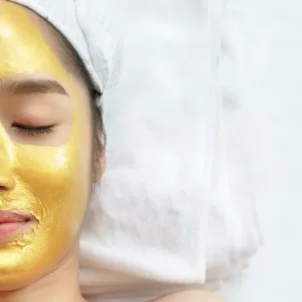Dry brushing—aka sloughing the dead skin off your body with a firm-bristled brush—doesn’t sound all that appealing. However, the list of purported benefits reads like a checklist of everything I want out of a treatment. It gives you softer and glowier skin, improves circulation, casts out toxins, and makes cellulite do a disappearing act. Throw in the fact that radiant celebs like Miranda Kerr and Molly Sims are fans of the treatment, and I was sold.
But does it live up to all the hype? I find out.
Dry Brushing Benefits, Explained
Exfoliates
Gentle dry brushing exfoliates your skin by whisking away dead skin cells. In turn, It helps any treatments you use on your body work better. The results? Smoother, softer skin. “Exfoliating is helpful because when we age, the way we slough off skin cells is slower,” says Sonia Batra, MD, a board-certified dermatologist in Santa Monica, Calif. and Assistant Clinical Professor at UCLA. Exfoliating leads to skin that looks less dull and feels less rough. Most dermatologists recommend some form of exfoliation, whether physical (like dry brushing) or chemical (like lactic acid), she adds. Dry brushing can help your skin look more uniform and increase glow. However, Batra cautions that you don’t want to overdo it, as it can create tears that let bacteria and other nasty things into your body. How can you tell if you’re going a little nuts with dry brushing? “Anything you’re doing that leaves your skin red for more than a few minutes,” says Batra, is a sign you need to lay off a bit. Also, if you notice that your skin has cuts or abrasions after dry brushing, you’re taking it too far. Dry brushing is meant to get rid of dead, dry, outer cells. Essentially, it should only get rid of what doesn’t belong.Increases Circulation
“In general, anything that stimulates the top of the skin will increase circulation,” says Batra. So, in theory, dry brushing can help improve your circulation.Gets Rid of Cellulite
Unfortunately, there’s no real way to treat cellulite. Cellulite happens because of fibrous tethers in your subcutaneous fat that create dimples. Thus, a simple pass with a dry brush isn’t going to fix them permanently. But before you abandon all hope, Batra speculates that if fluid retention and bloating are making your cellulite appear worse, manually massaging out any fluid could temporarily make cellulite look better.Helps With Lymphatic Drainage
Batra says there’s a technique involving deep massage to help people with lymphedema (swelling caused by a blockage in the lymphatic system, typically caused by the removal or damage of lymph nodes during cancer treatment). Any sort of intense massage can theoretically help with lymphatic drainage. But—and this is a big but—unless you have lymphedema, your body is doing just fine at circulating lymph. Also, you shouldn’t be dry brushing hard enough for it to be intense. See the above section on exfoliation if you need a reminder as to why.What You Need
- A firm-bristled dry brush. (The bristles should be natural, not synthetic.) Choose one with a long handle to get hard-to-reach places like your back. Try Earth Therapeutics Far-Reaching Body Brush, $8.99.
- A soothing body moisturizer.
How to Dry Brush
- Start at your ankles and begin brushing your body using gentle, upward, circular motions. Always brush toward your heart.
- Continue up your body with the brush. When you reach your stomach, brush counterclockwise. When you reach your arms and back, remember to keep brushing toward your heart.
- Hop in the shower to rinse off.
- Follow up with a gentle body moisturizer.
How Often Should You Dry Brush?
It depends on your skin type, so be sure to listen to your body. “Your skin is an organ meant to seal you against the outside world,” says Batra. “If it’s abrasive, it’s counterproductive.” Be especially careful with delicate areas like your chest and inner thighs. Also, dry brushing is likely too harsh for people with eczema or psoriasis, she says. Now that you’ve got the scoop on dry brushing, will you try it?More like this









